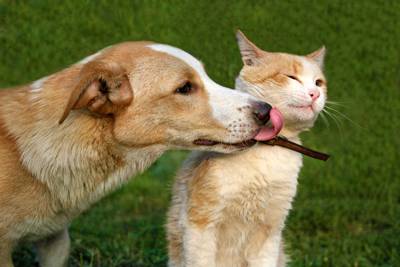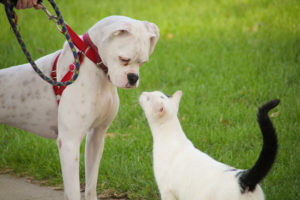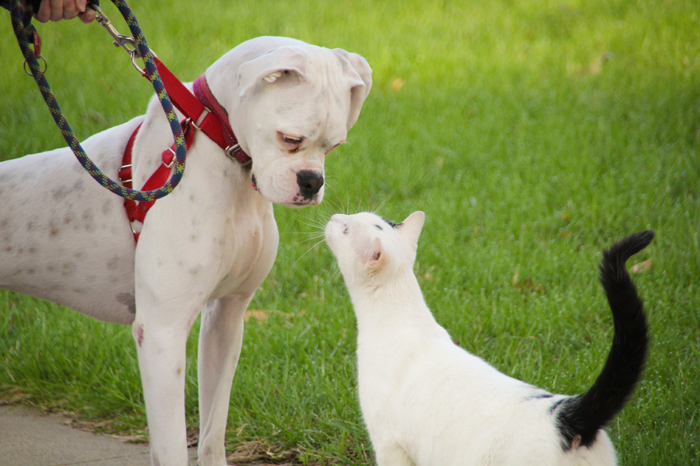
One of the biggest mistakes well-meaning pet lovers make is the way in which they introduce a new pet into the household. Whether it’s a same species or a cross species introduction, it’s not a matter of simply bringing the new pet into the home and leaving them to bond on their own.
It’s just not going to happen.
Incumbent pets can be territorial and there is absolutely no guarantee they will tolerate a newcomer. You need to take their individual personalities into account, too. Moreover, other factors come into play, such as a dog’s prey drive in a cat-dog introduction.
Nevertheless, you certainly stand a much better chance of them getting along if you strategize and supervise the introductions.
Introductions to the Family Cat

In the beginning, it’s a good idea to sequester a new cat or kitten in one room and make the initial introductions by smell. One way to do this is with a pair of socks. Rub one sock with the smell of the newcomer and the other with the smell of your incumbent cat or cats. Then swap out the socks by placing the newcomer’s sock in an area of the house where other animals are and vice versa. Do this daily for a couple of days.
When you ready for formal introductions, place the newcomer in another room of the home and allow your incumbent cat or cats to go inside the room the newcomer just vacated and sniff around. Again, do this several times before taking it up a notch and allowing them to sniff each other.
Next, place the newcomer in a carrier so that she feels secure and allow your other cat(s) to sniff around it. It’s important to gauge how it’s proceeding before actually letting them meet face to face—with no barrier between them. Plan the initial meet-up for when you have a fair amount of time, such as on a weekend or when you’ve scheduled a few days off from work.
Rubbing vanilla essence on their shoulder blades and at the base of the tail on all cats involved in the introduction also is helpful with the initial meet-up because when they sniff each other, they will smell the same.
Feline introductions can take a long time—sometimes up to six months before they tolerate one another.
Introductions to the Family Dog

Once again, the sniffing game is a good place to start. Don’t ever let a dog rush at your cat or kitten, even in play. After giving the animals time to get used to the smell of each other with the room-sniffing routine, move on to the next step: a face-to-face meeting—with precautions. For this meeting, keep the cat in a carrier and your dog on a leash. In this way, you can control your dog and can pull him away if necessary. Make sure you have treats handy and reward your dog, along with lots of praise.
When you finally let your cat out of the carrier, continue to keep your dog on a leash so that you can separate them quickly if necessary. At all times, make sure there is an easy escape route for the cat. It’s a good idea to do initial introductions close to a cat condo or tree so that the cat can easily—and quickly—get out of reach of the dog.
Introductions to Birds and Small Critters

It’s important to bear in mind that cats are natural predators,and small critters, such as hamsters, birds and fish, need to be kept out of harm’s way at all times. Both birdcages and small animal cages should have a box inside them so that these pets can escape completely out of sight, too.
Different animals can live harmoniously in a household. However, never leave a cat alone in a room with a small critter or a fish bowl. Natural instincts might just kick in when you are not there. They can get along; however, remember that from a feline perspective, a small critter or a bird is first and foremost lunch.
About the Author: Sandy Robins is the 2013 winner of the “Excellence in Journalism and Outstanding Contribution to the Pet Industry Award.” Her work appears on many of the country’s leading pet platforms, such as MSNBC.com, MSN.com and TODAYShow.com. She is a regular contributor and columnist in multiple national and international publications, including Cat Fancy, as well as the author of the award-winning books “Fabulous Felines: Health and Beauty Secrets for the Pampered Cat” and “For The Love of Cats.” Learn more about Sandy on her website or Facebook page. #welovecats





